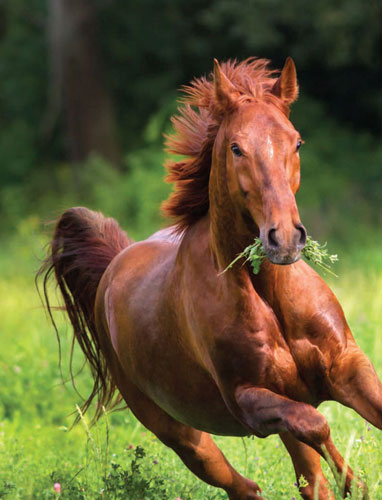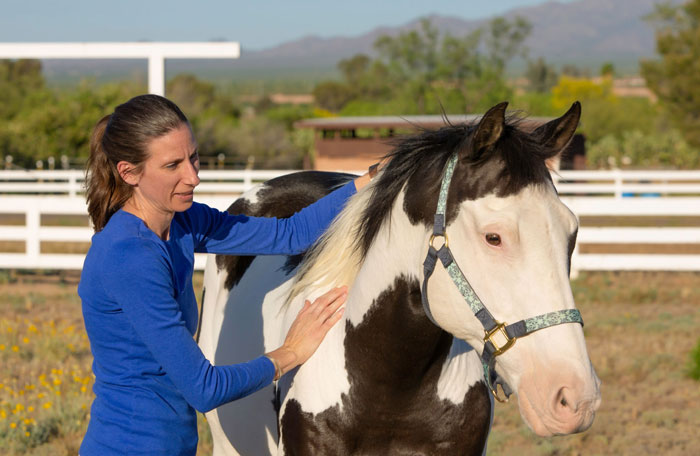The term “myofascial release” is becoming more and more prevalent in the context of massage, posture, fitness, and overall wellness for horses. This alternative therapy works to alleviate pain, restore function, and improve overall health and well-being by addressing the fascia and muscles. These two soft tissue systems are extremely integrated, hence the term “myofascial”.
WHAT IS MYOFASCIAL RELEASE?
Myofascial release (MFR) has a lot in common with other massage techniques, but it has a different way of approaching a body’s individual issues. It involves a slower, gentler technique for whole body integration. Facilitating the client’s own body awareness while releasing restrictions in the muscles and fascia (see sidebar on page 38) creates far-reaching physical and emotional effects, and brings one to a deeper level of consciousness. “Intention” is a key word in this therapy, meaning that the practitioner should go into a session with a calm, mindful attitude and a goal of releasing tension in the tissue without forcing a desired outcome.
HOW IT WORKS
In order to perform any sort of massage, we need to make contact with the skin in one way or another. Myofascial release is no different — the layer of fascia lies just below the skin, and is the easiest for a practitioner to manipulate. The shape of the fascia cannot be quickly changed, as this tissue is incredibly strong. Myofascial release can, however, help to improve the health and fluid consistency of the fascia on a local and global level to improve form and function of the body. The idea is that gentle directional pressure applied to restricted fascia helps improve the glide between the fascia, starting with the superficial layers. This releases any potential adhesions and moves the fascia to improve circulation and lymphatic drainage. The therapy also helps hydrate the space around the cells — fascial microtubules — which helps keep the body lubricated and
prevents mobility issues.
TRYING IT AT HOME
Where to start
Posture is the language of the body. If you observe your horse, where does he look “sticky” — rigid or less fluid? How is he responding or reacting as you groom him, tack him up or even

pet him? If you can’t tell by looking, try feeling. Notice where his skin or muscles are tight or restricted. A myofascial release practitioner can
show you how to observe these subtle signs.
What to do
Myofascial release is often done directly on the skin with no massage oil. It is the contact friction and gentle slow transverse traction or push into the restricted areas that facilitate the release. The angle of approach is often between 30° to 45° to the tension, and improves the glides of the fascial network. Start by placing direct pressure on your horse’s skin in an area you would like to improve. Gently push and glide — think of pushing or squeezing toothpaste out of a tube. Is it dry and sticky? Is it pasty or more gel-like? Slow intentional feel and observation will guide your depth of pressure and time. If done properly, the fascia will begin to release. As it lets go, the water within the areas around the cells will

hydrate and “plump up” the fascial layer when you release your pressure. Once released, the “plumped” tissue will continue to self-lubricate through regular activity and movement. At the very least, this gentle bodywork session will act as a massage for your horse, improving blood flow to problem areas. When trying this therapy on your horse, you may find the hair to be too slick. If you wet your hands with water you should be able to attain the friction needed. Aim for a pressure of three or so pounds, and always work with safety and your horse’s tolerance in mind. Be in the moment, enjoy observing through all your senses, and pay attention to your horse’s conscious and subconscious body language responses. As humans, we are all too often disconnected from our bodies. Our horses, in contrast, are prey animals, so they are quite tuned into their bodies. Myofascial release is a great way to make them feel better on the outside, so they can feel better on the inside, and vice versa!

